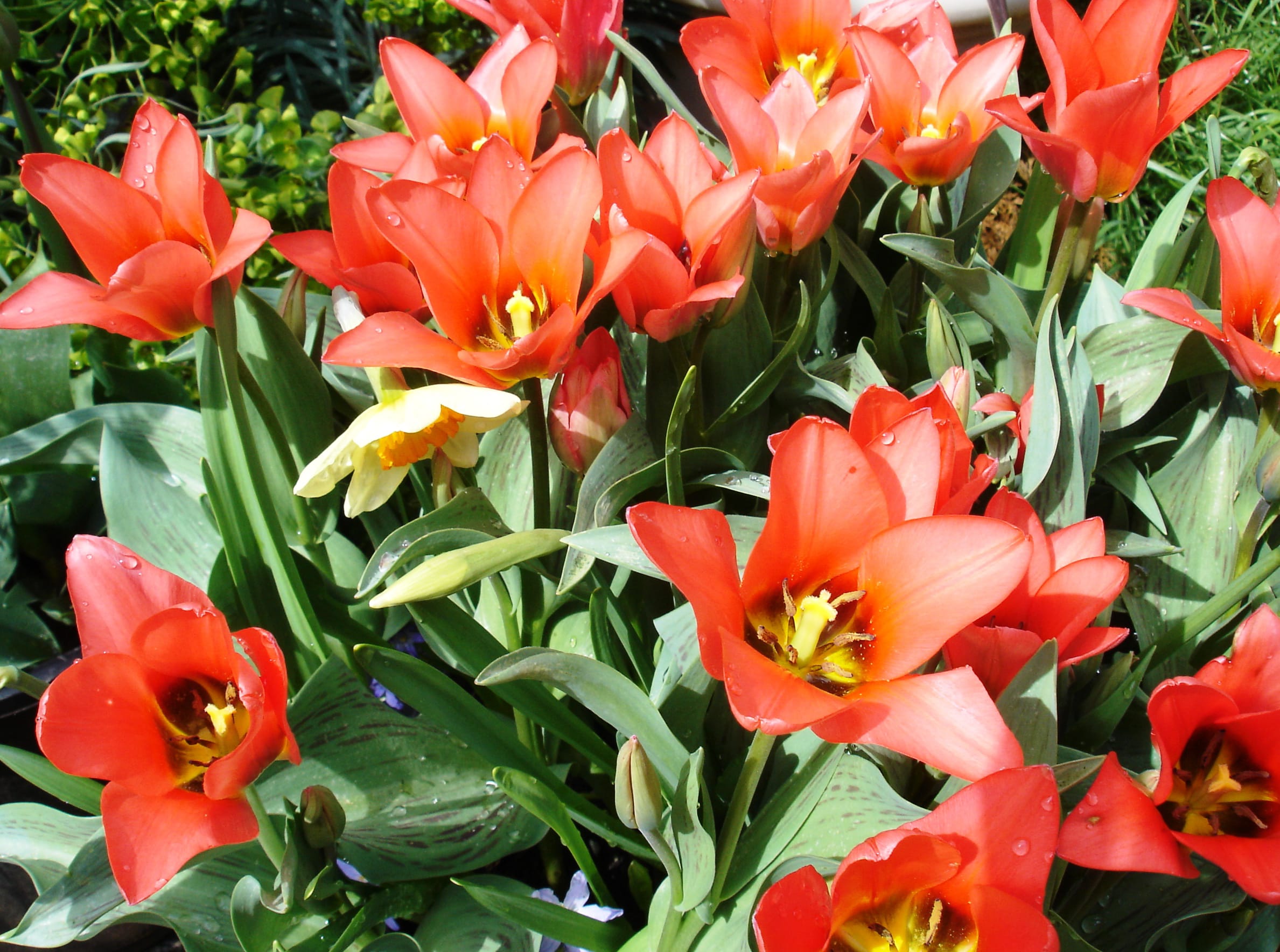March, April and May are the months when most spring-flowering bulbs appear. The large narcissus group flowers from early to midspring. Most of the bright yellow, cream, orange and salmon narcissi with large trumpets are commonly called daffodils. They can be left undisturbed for many years in perennial borders or naturalized in grassy areas. King Alfred stands straight and regal in the garden bed, head and shoulders above the other daffodils.
Don’t pass up the smaller varieties. They are among the earliest spring-flowering bulbs and are quite durable. Tete-a-tete is sweetly scented and so reliable that it’s a perennial award winner. When you see these little wonders in the garden, heads nodding as if in conversation with innumerable identical twin plants, you will appreciate the literal translation of its name, head-to-head.
For a unique switch from the traditional, try one of the delightful Pheasant’s Eye narcissus (narcissus poeticus), traditionally called the Poet’s Narcissi. Great naturalizers, these are among the last daffodils to bloom, with large white petals surrounding a tiny, red-rimmed yellow cup that gives it its name. In addition these also boast a light fragrance. Smaller daffodils are perfect for rock garden displays.
Species tulips are the earliest tulips to bloom in my garden. They are right at home in the rocky outcrops I have built along the outer edges of my lawn. Species tulips appear in early spring and are the most reliably perennial of all the tulip family. Their blooms are typically smaller than hybrid tulips but many will multiply and spread from year to year. Along with a smaller stature and bright flower color, many species tulips offer interesting foliage as well.
The ornamental cherries are graceful, flowering trees that do well in our climate zone. Since they come in such a wide variety of shapes and sizes, you should take time to decide which one is best for your garden. The Sunset Western Garden Book lists many varieties and includes details of mature plant size, color and type of bloom. If you know you want a flowering cherry in your garden, but don’t know the variety you want to plant, this is the time of year to see them in full bloom and to make a note of your favorites.
Begin by looking realistically at your garden. Is there an area where a tree of this size will be able to grow to maturity? Once you’ve chosen the area, take measurements before you shop for a tree. Measure along the ground to the furthest point you want your tree to reach. If you want the upper branches of your mature tree to spread over a bed or border, include that in the measurement. If you’re planting near a building, make sure the measurement stops at least four feet from the structure. Some trees will grow twice as wide as others, so when you go tree shopping, stick to your measurements.
A tree is an important, long-term asset to the garden. At the nursery, look for a tree with the flower color and tree shape that you like most and cross-reference the tree of your choice with any information the nursery has available. At the nursery, ask the salesperson helping you if the variety of tree you have in mind has any specific fungal or disease problems in our climate. There are new varieties of ornamental cherries that come out every year and, of course, old standbys that have proven their value in the Northwest garden. Take your time and get the right tree for your garden.
You can begin to plant onion sets out in the garden now. Onion sets are nothing more than packages of very small onion bulbs that you will find at most nurseries and garden centers. The sets may be identified only as red, white or yellow. In prepared garden soil, run a line in a straight row. Dig a small trench along the line. This is called a “drill” and should be only deep enough so that the onion set can rest under the soil line with its tip still protruding above soil level. Use the edge of a hoe or rake to make the drill. After setting the onions, pull the soil back over the drill, leaving the tips showing. Shallots can be planted in the same way.



